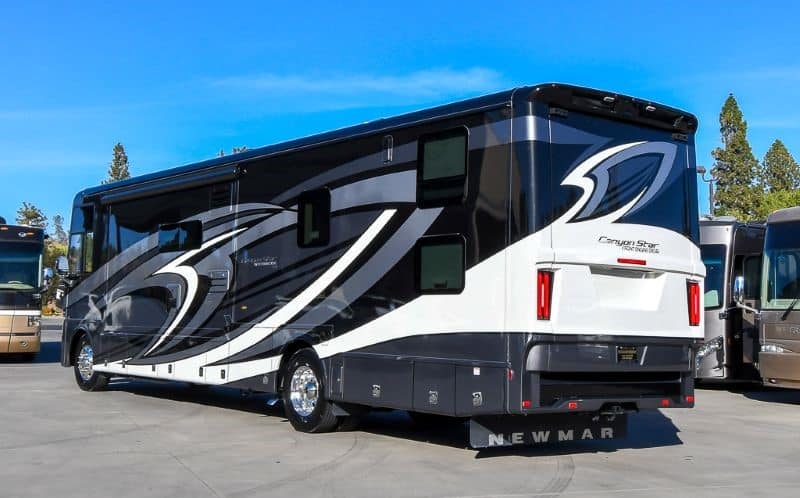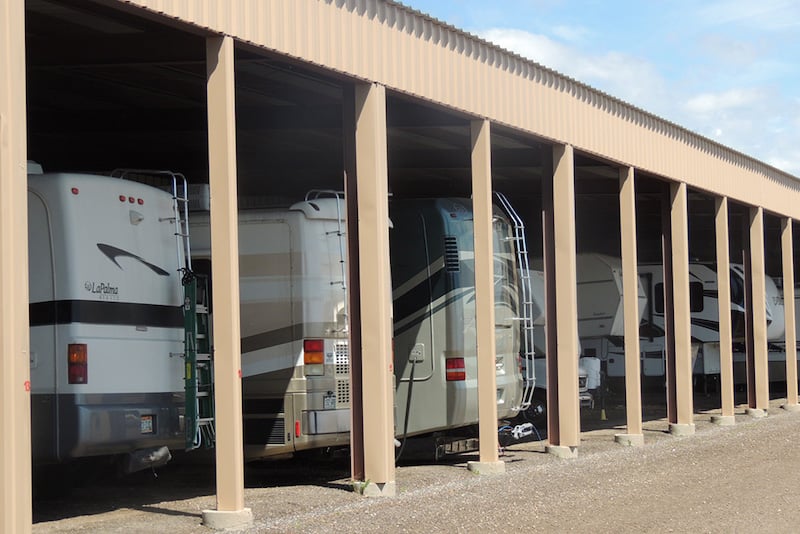Can you use Crocs as water shoes? Since I’ve done a lot of canoeing and kayaking in my life, my first response would be “no.” They’re designed to slip on and off; the last thing you want to do on a river or lake is losing your shoes. However, Crocs have evolved since I wore them so I might be a bit hasty.
When I think of Crocs, I think of the traditional resin shoe with holes on top. You might not know that Crocs makes several different styles of shoes which range from everyday sandals, boots, flip flops, water shoes, and hiking-specific footwear.
So, hold on to your Keen’s, Chaco’s, Teva’s, and Merrill’s as we dive into the performance of Crocs as water shoes.
What are Crocs?
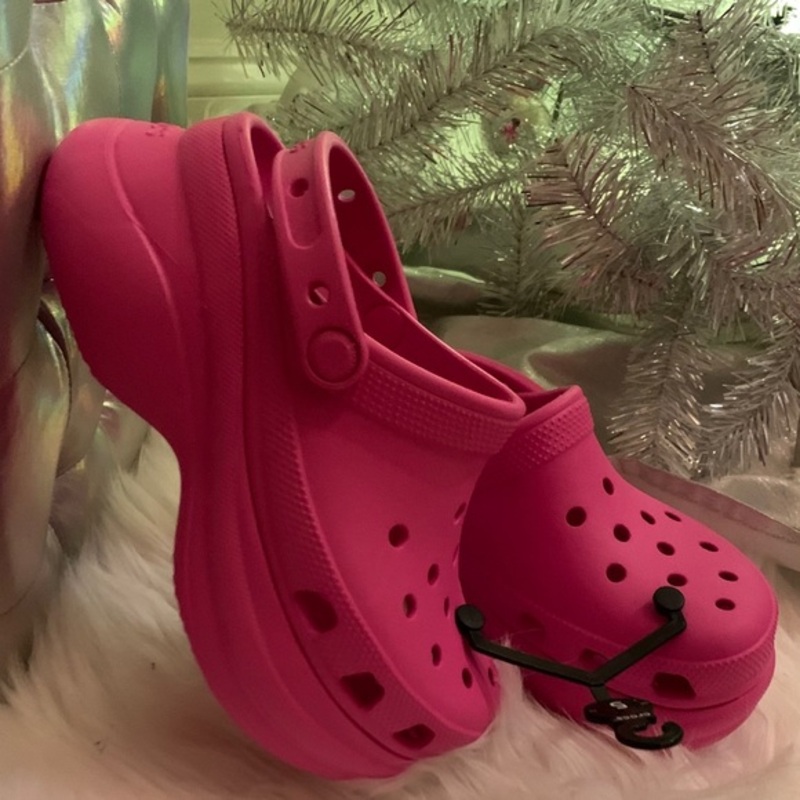
Crocs were designed to mimic the Dutch clog and were originally used as boating shoes. They were made with slip-proof soles, waterproof materials, and foot protection. The Croslite material, exclusive to Crocs, is very comfortable. Since the shoes were made to be good on both land and sea, they were named after crocodiles.
You might not know that every Croc, no matter the size, has exactly 13 holes in the top of the shoe for ventilation, and these do serve the wearer well, allowing water to escape.
Can Crocs Be Used as Water Shoes?

By their makeup, water shoes are designed to be submerged under water and are typically made of mesh for breathability. They also have great traction on the sea floor, so you can walk on rocks safely under the water and protect your feet from sharp objects. Water shoes should also allow water to flow in and out and generally quickly dry. They also completely enclose the foot.
You might also be aware that there’s footwear called a water sandal which is different from a water shoe. Water sandals are generally open at the toe and heel, although the terms are used interchangeably.
Traditional Crocs, however, are generally looser on the foot than a traditional water shoe and might not be good for fast-moving water. Here are some pros and cons of Crocs as water shoes.
Pros of Crocs as Water Shoes
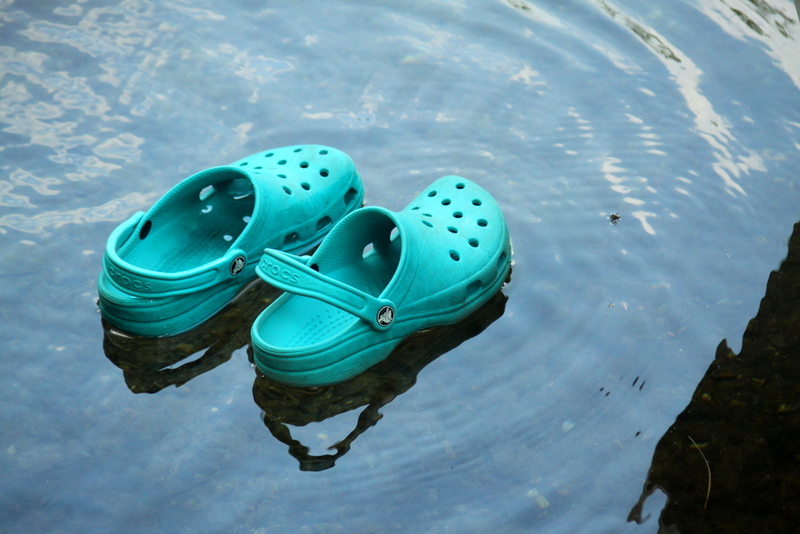
The first pro of Crocs as water shoes is they’re meant to be in the water, so the material is waterproof and quick drying. The shoes also float, so they won’t sink to the bottom if you go in the water.
These shoes are also lightweight, weighing between 11 and 16 ounces, making them great to pack for light water crossings or to rest your feet from hiking boots once you get to camp. They’re considered very comfortable shoes to wear.
Cons of Crocs as Water Shoes
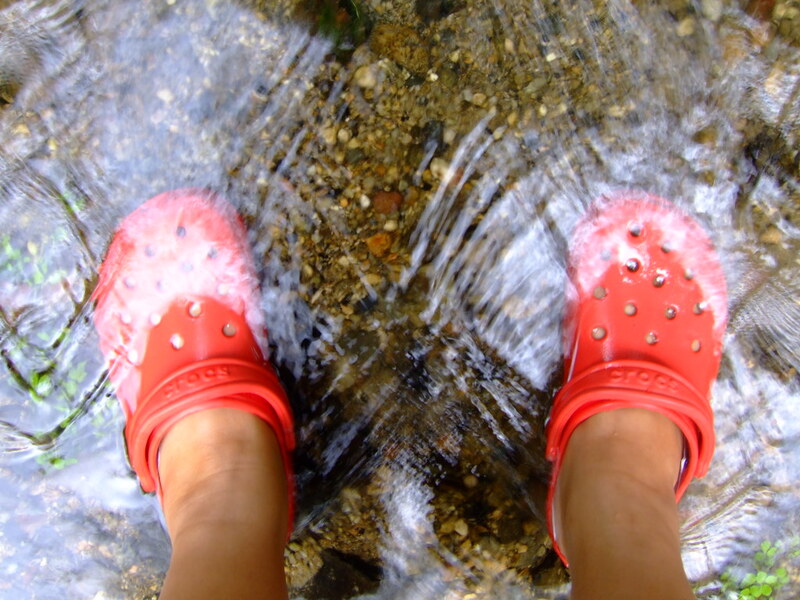
Crocs aren’t tight enough on your feet to stay on in swift water. There’s nothing worse than walking on a rocky riverbed shoeless because the river took it. But, because they float, you should be able to catch them. If not, their price tag isn’t near a good pair of high tops.
Because of the shoe holes, Crocs tend to gather rocks inside (ouch!). That could also be a problem with any sandals you might wear in the water.
While Crocs are meant to be in the water, they’re not necessarily equivalent to water shoes. If they don’t have the correct treads on the bottom or don’t support your feet, they could be more of a hindrance than a benefit when using them as water shoes.
Crocs are also squeaky when wet, so you might want to consider the noise tolerance of you and your outdoor friends.
4 Crocs that Make Good Water Shoes
There are, however, a few different types of Crocs that might work better for water fun. Let’s check out a few of them.
1. Swiftwater Mesh Wave Sandal
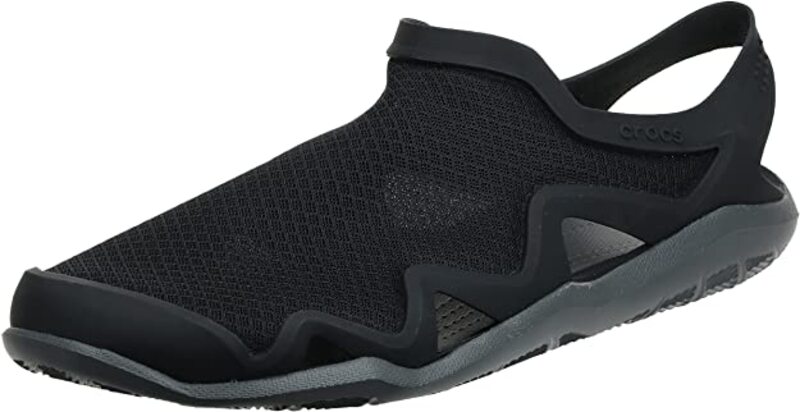
These athletic closed-toe sandals are one of Croc’s most water-friendly styles. Their minimal design is water-friendly and has a herringbone pattern outsole designed to channel water away. These lightweight, all-purpose sandals can be worn on your next adventure, at the pool, on a shopping run, or when you just hang out.
2. LiteRide Clog
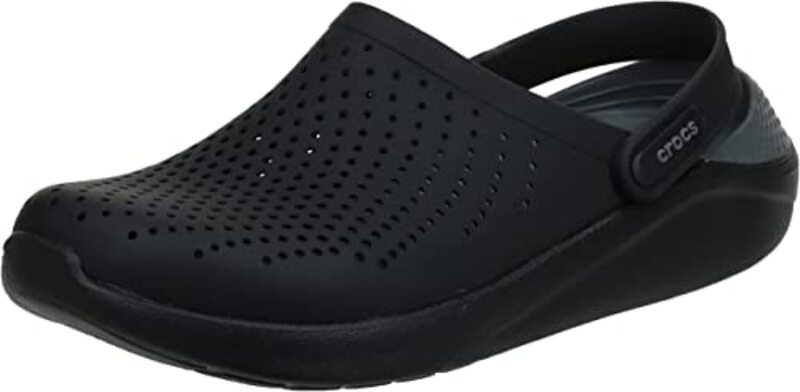
This newer Croc style is soft, light, resilient, and offers a relaxed fit. These athletically-inspired sandals are engineered to feel great with every step when hiking, biking, or exercising. The foam insoles are soft, lightweight, and resilient. They’re touted to feel broken-in from day one.
3. Offroad Sport Clog
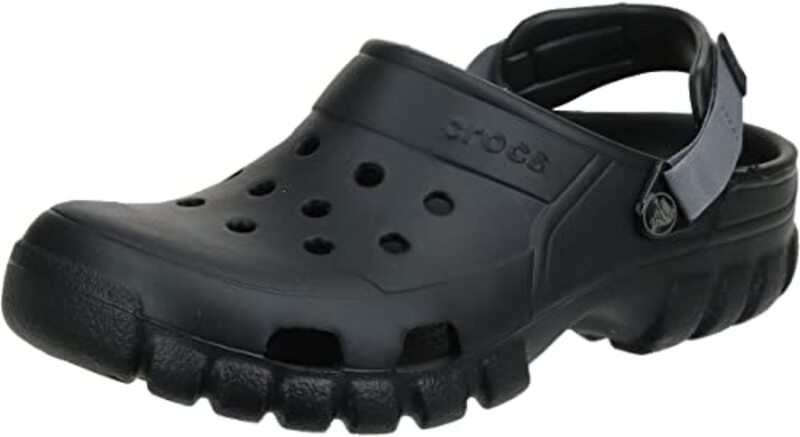
These lightweight, off-road sport clogs have rugged lug outsoles with enhanced tread for better traction and support. They’re easy to clean and quick-dry with typical Crocs comfort. The ventilation ports add breathability and help shed water and debris quickly.
4. Classic Clog
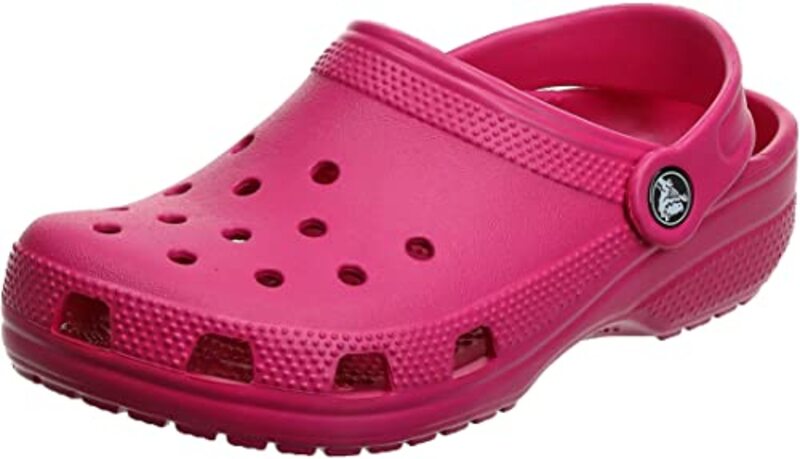
We can’t skip the classic Croc clog that’s lightweight, fun, and comfortable for everyone. These slip-on clogs that slip on and off. They offer a pivoting heel strap for a more secure fit.
Do Croc Flip Flops Work as Water Shoes?
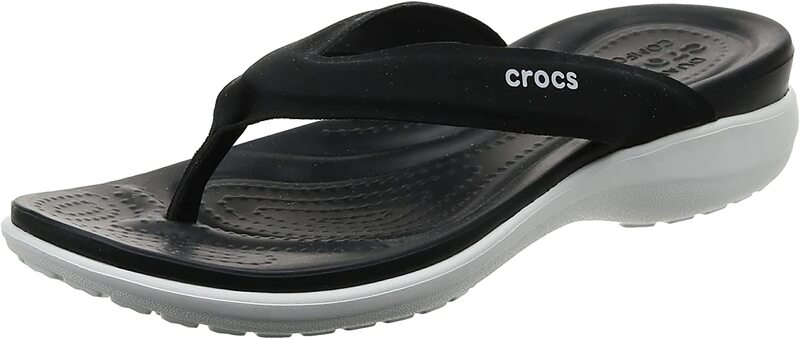
While Crocs sandals have the same lightweight, waterproof materials as other Croc styles, I would leave these at home if you are canoeing, hiking, or adventuring. Otherwise, stow them in your backpack for at the campfire later in the evening.
Although they float without the strap to hold them on your foot, I’m afraid it would not take long for these to come off in moving water. If you have a small stream to cross, you might be ok, but stick with water shoes or water sandals for heavy-duty hiking and water activities.
Can Crocs be Used for Swimming?
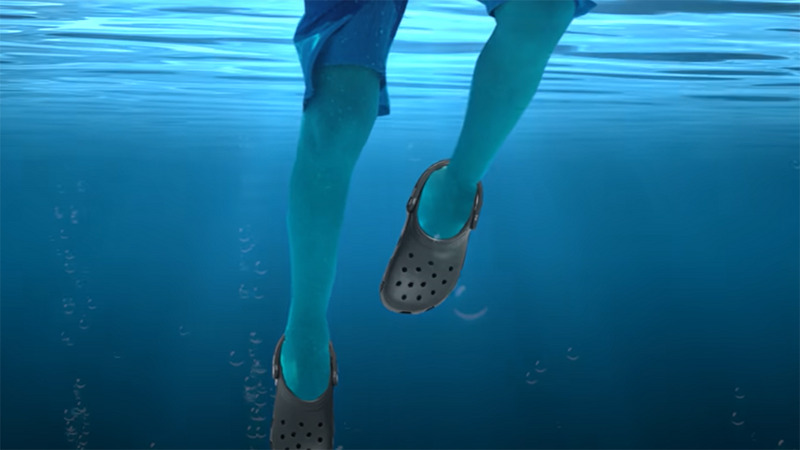
Crocs would be great for swimming in a rocky stream, pond, or lake. I would refrain from letting your kids wear them in a pool just because they can’t be very hygienic.
Make sure your strap is tight and in “sports mode.” For all you non-Croc fans, the strap is behind your heel, so the shoe remains more secure on your foot. It holds your heel back and keeps your toes towards the front of the Croc.
Also known as 4X4 mode in the Croc world, make sure your Crocs fit correctly. Have the strap behind your heel, making this a great shoe for any activity.
When you’re enjoying the fire around your campsite, put the strap to the front, and it’ll rest on top of the shoe, making them an ideal lounging shoe. They’ll easily slip on and off as you get in and out of your camper or tent.
Can You Wear Crocs on the Beach?
Crocs are great as beach shoes. They’ll protect your feet from the hot sand and can slip on and off as you go in and out of the water. The beach is a great place for Crocs flip-flops or the ClassicCrocs.
Will Crocs Float?
Crocs are made from a proprietary resin material called Croslite. The resin is 100% vegan and so durable that the company fixes used pairs to donate to developing countries.
The resin material doesn’t absorb water, and they’re lighter than water, so your Crocs will float. If you lose one in a lake or stream, you can likely retrieve it.
Do Crocs Make Good Rain Shoes?
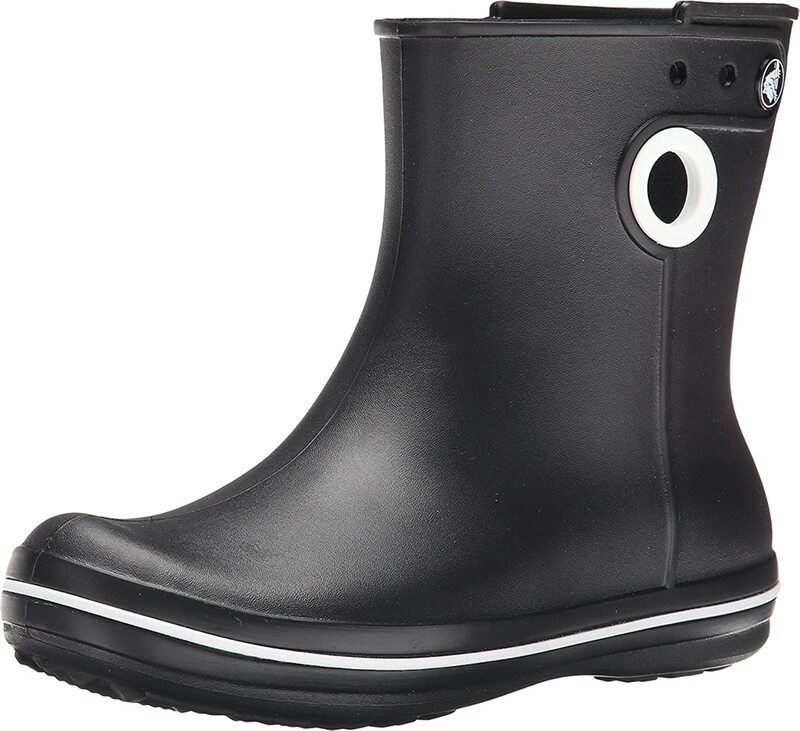
While Classic Crocs would be fine in the rain, did you know that Crocs makes a rain boot? This waterproof boot has no stitched seams, so they’re leakproof. These are excellent, lightweight, comfortable, and can be used as mud boots. Use them on the farm, job site, or camping.
4 Shoes Better Than Crocs as Water Shoes When You’re Camping
If you aren’t convinced that Crocs will work for you as water shoes, check some of our favorite brands that might work.
1. Keens Newport H2 Sandals
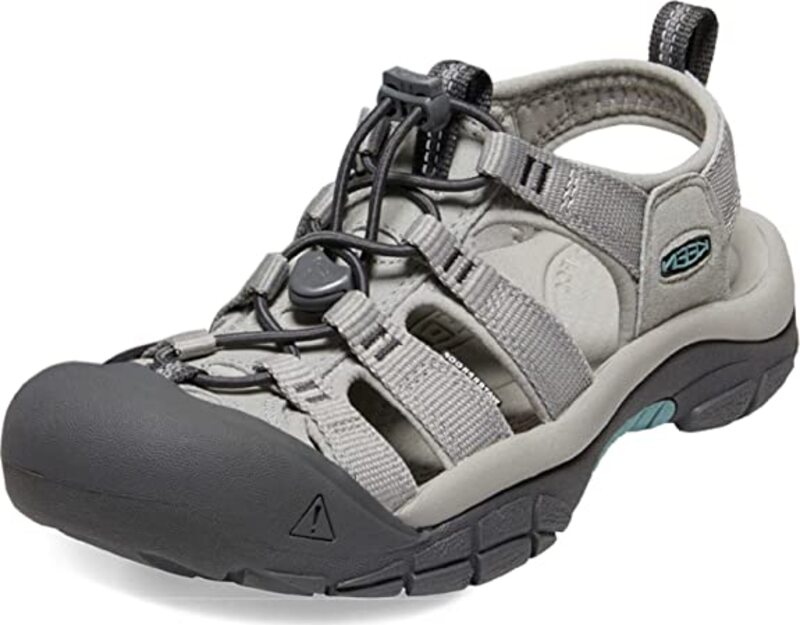
Keens are my go-to for hiking boots and water sandals. Although these are called “sandals”, some choose to call these water shoes because of the closed toe and laces. They’re different from traditional water shoes that have webbing. These have a great grip on wet terrain and fully protect the foot while allowing water to flow in and out but resisting rocks and other debris.
These shoes are great for float trips, hiking through off-trail or rocky terrain, and hiking through wet terrain. You might want a more traditional hiking boot for lengthy hikes, however.
2. Teva Forebay Sandal

This Teva Forebay looks great and is good for day hikes on land and water. It’s said to be lightweight and will dry quickly if you run into water. They’re also great for rough terrain and have a lot of comfortable cushioning. Those who reviewed the shoe thought it was good overall but a bit stiff straight out of the box. If you plan to purchase these sandals, give them a breaking-in period.
3. Merrell All-Out Blaze Sieve Water Shoes
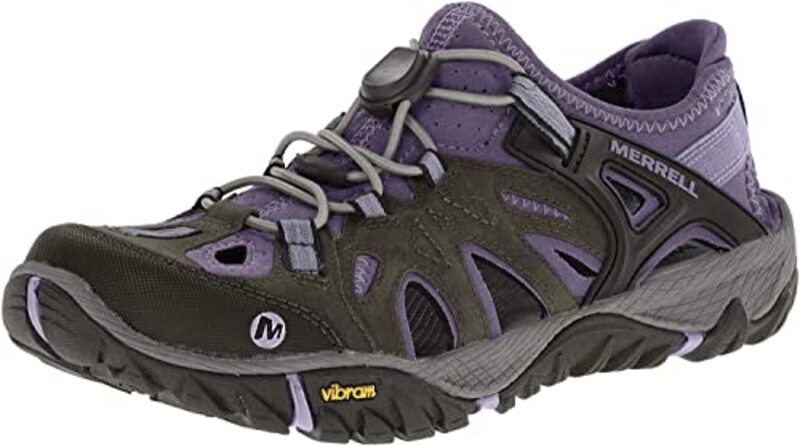
Merrell’s are another favorite in our household. These lightweight shoes are super snazzy and will provide great protection for your feet, any water activity, and can take on all kinds of terrain. This close-toed shoe is made with leather and neoprene uppers. They dry quickly and resist scuffing.
The shoe features a UniFly midsole that absorbs shock well and promotes foot stability on the trail. It’s treated with an antimicrobial solution to keep the shoes smelling fresh.
4. Columbia Drainmaker Water Shoe
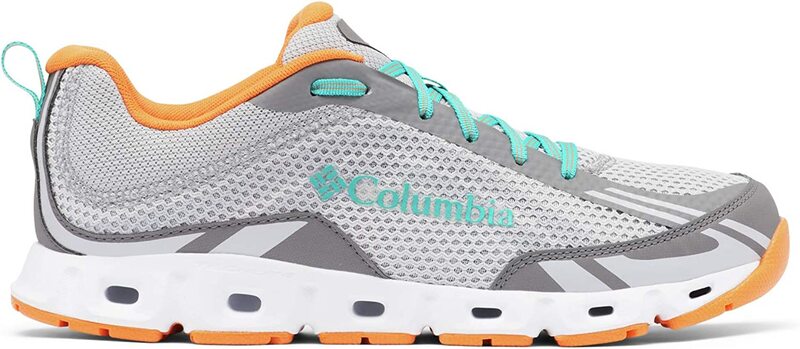
The Columbia Drainmaker looks pretty much like a normal trail running shoe, but it has the ability to drain water, similar to the other shoes. Drain ports are located in the sole at the heel and front. They also have a removable insole.
The shoe dries quickly with the sides made of mesh material. The razor siping, which are tiny cuts in the rubber, is great for traction. The Drainmaker is great for the beach, rivers, camping, hiking, boating, and rafting.
Whether you’re exploring a forest hiking trail or walking on your boat, this is a great shoe to go anywhere.
The Bottom Line on Using Crocs as Water Shoes
Crocs are a great brand with several styles that would work great as water shoes. Did you know that Crocs has sold more than 850 million pairs of shoes since its inception in 2002? The brand is in more than 85 countries worldwide and is one of the world’s top 10 non-athletic footwear brands.
As you consider Crocs for a water shoe, take time to consider what activity you might be doing in those shoes. Also, consider whether you want a true water shoe or maybe a water sandal. Crocs offer both.
If you’re planning a multi-night float trip, you definitely want a shoe that will protect your feet with a versatile shoe that works well in and out of the water. With a Croc water shoe, you can take one pair of shoes that you can wear in the water and around the campfire.
Hiking through rough or rocky terrain? You’ll want a shoe with good foot protection and good traction. A good water shoe will also protect your feet in rough water terrain. Plan on a true hiking shoe if your trek is going to be long. You can always carry your Crocs in your backpack for water crossings or wet terrain.
Ultimately, the bottom line is that Crocs can work great as a water shoe. It all depends on what you want and like. But, before you make a final decision, remember, don’t get hung up on the Classic Croc. Be sure to check out all the great styles this brand offers.
Related Reading:
– 12 Best RV Podcasts You Must Listen Too
– 10 Best RV Towel Racks For Inside And Outside
– Is An RV Washer And Dryer Worth It?
– 13 Best RV Resorts With Water Parks
About the Author:
Terri Nighswonger and her husband Todd have been RVing and work camping for five years with their Cavalier King Charles Spaniel, Newton, and their Minnie Australian Shepherd, Remi.
They originate from the Midwest but plan to enjoy the West for a few years, wintering in Arizona and summering wherever the road may lead. Writing is Terri’s passion, but she also loves hiking, kayaking, walking her dogs, and anything she can do outdoors.



